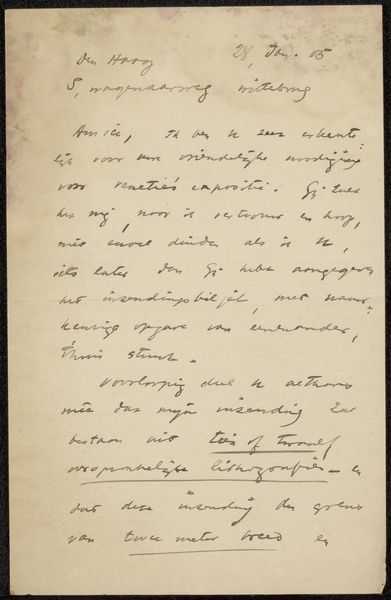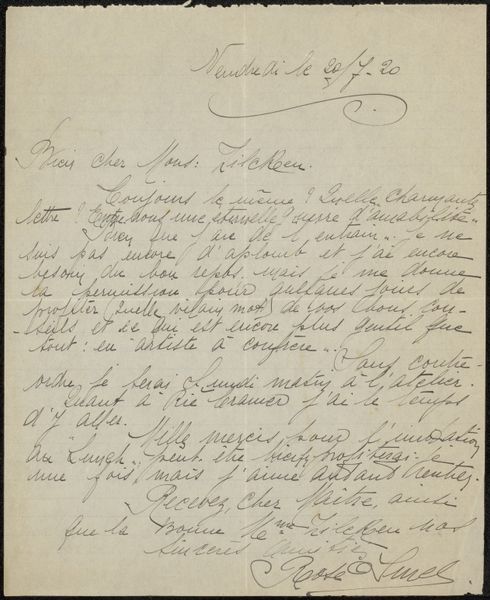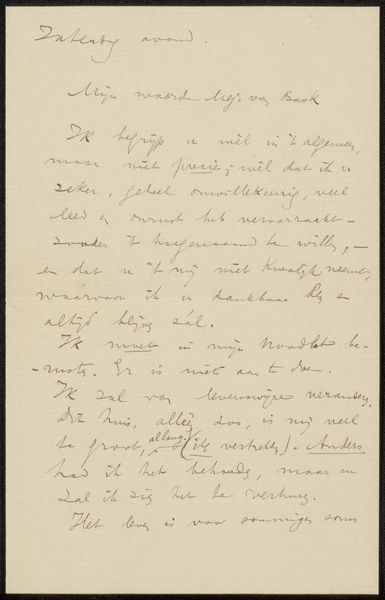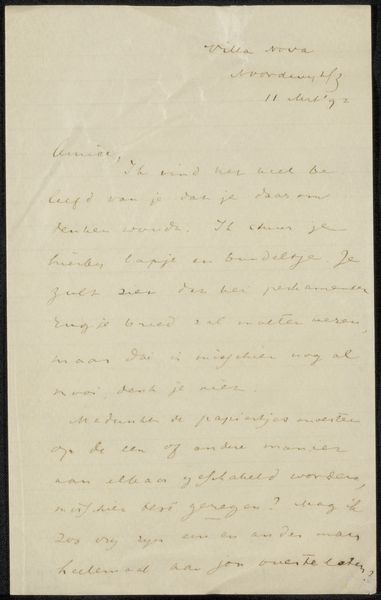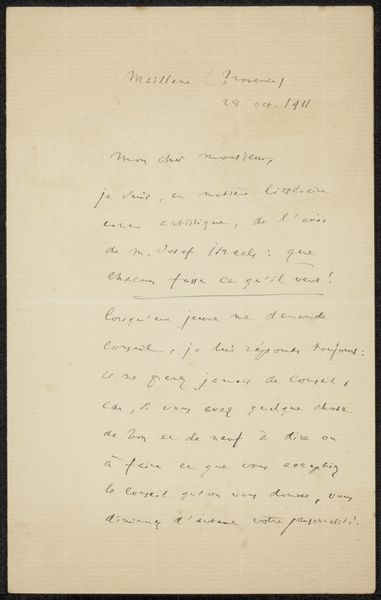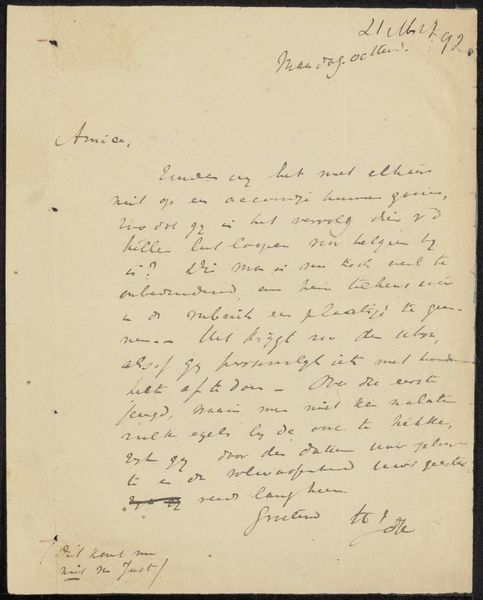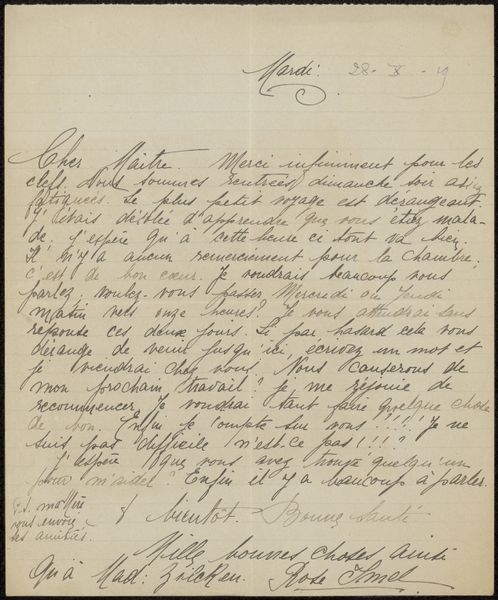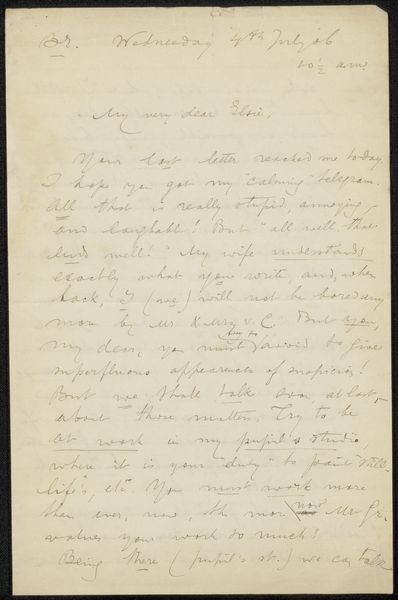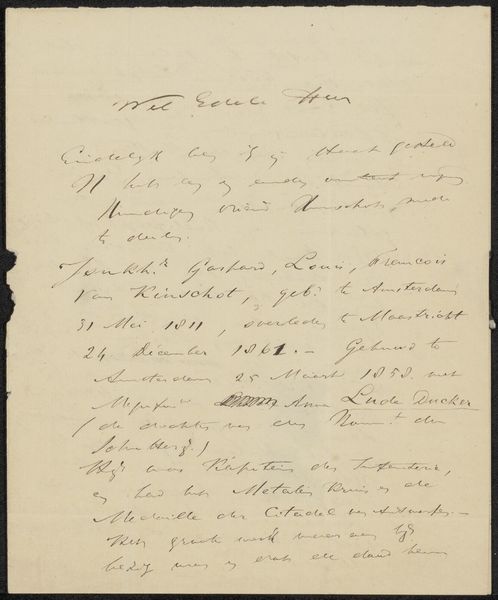
Copyright: Rijks Museum: Open Domain
Editor: This is "Brief aan Philip Zilcken" by Hendrik Johannes Haverman, thought to be from 1905. It's a mixed-media drawing, a letter really, on aged paper, in the collection of the Rijksmuseum. The script gives it the air of a personal sketchbook. How do you see this work? Curator: I see a confluence of the personal and the professional. The hand-drawn text itself is a symbol. Notice how Haverman uses his script not just to convey information, but also to imbue the message with a certain emotional quality, a visual echo of his inner state. The letter, seemingly a mundane correspondence, transcends its function to become an intimate portrait of the artist himself. Does the handwriting itself suggest anything to you? Editor: It’s a bit hurried, perhaps? Functional, but definitely showing his personality in the curves and slants. Curator: Precisely. And consider, the act of handwriting itself—before typewriters became ubiquitous—was a direct extension of the self. This letter, then, becomes a form of self-portraiture, wouldn’t you agree? The medium and the message become inseparable symbols, imbued with layers of meaning beyond the literal text. Editor: I hadn’t thought of it that way, but I see it now. It is much more personal than just the text; it carries so much meaning through the act of writing itself. Curator: This simple piece allows us to recognize how ordinary objects and actions carry significant emotional and cultural resonance. An authentic form of intimacy is recorded here. Editor: I’ll definitely be thinking differently about letters now! There’s so much more there than just the words.
Comments
No comments
Be the first to comment and join the conversation on the ultimate creative platform.

